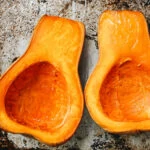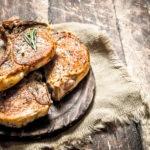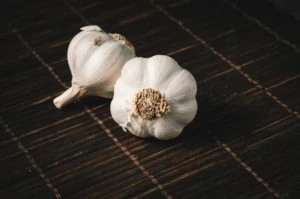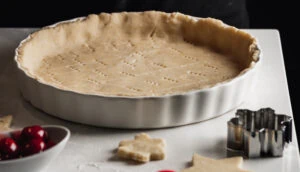When you buy a new frying pan, it isn’t enough to know what specific brand you want; you also need to know what size you want.
Why is this? A frying pan (also called a skillet) is a kitchen product that has several different sizes to choose from, and the size differences aren’t as obvious as they are with volume-based saucepans.
While it’s often true that a 10-inch frying pan can do most of the same tasks that a 12-inch frying pan can do, they aren’t always interchangeable.
In this guide, we’re going to talk about how to measure a frying pan, determine the best frying pan size for you, materials frying pans are made from, and the three most common sizes of frying pans. After reading this guide, we hope that you’ll be able to tell the difference between high-quality cookware from cookware that isn’t worth your time.
What Size Frying Pan is Best for Me?
More often than not, the only question you need to answer when it comes to figuring out what size frying pan you need is, what’s the smallest sized frying pan I can go with without overcrowding?
Preventing overcrowding of your food should be one of the first considerations when it comes to figuring out which size frying pan is best for you.
If you cook only for yourself, you should be good with an 8-inch frying pan. But if you cook for a large family, you’re going to want to get a 12-inch frying pan.
How to Measure a Frying Pan
A frying pan is typically measured by determining the overall diameter (wall top to wall top), not the diameter of the cooking area (base edge to base edge).
Because of design differences with how steep the walls rise, it’s common to have two 12-inch frying pans measure out differently.
Furthermore, when calculating the diameter of a frying pan, you sometimes have to round down to the nearest inch – never roundup. It’s common for a fry pan to measure slightly above the marketed length. For example, a 12-inch frying pan means that the pan measures between 12- and 13-inches. This window allows for design freedom.
Three Most Common Frying Pan Sizes
Three sizes are the most common sizes for frying pans: 8-, 10-, and 12-inches. Each has different benefits and uses. Let’s look at each size:
8-Inch Frying Pan
Benefits: A smaller pan diameter means that the heat is distributed more evenly across the cooking surface. Additionally, the pan can reach higher temperatures because of collateral heat exposure because of the pan’s sloped sides.
What to Cook with it: One fried egg, chicken breast or steak, sauteing vegetables for a side dish, making a fluffy omelet.
Best Example: T-Fal Non-Stick Frying Pan
10-Inch Frying Pan
Benefits: A medium-sized pan means there’s more middle ground to fit more food without overcrowding with a minimal sacrifice of heat retention.
What to Cook with it: Frying two chicken breasts, frying three eggs, reheating leftovers, sauteing more vegetables.
Best Example: HexClad Hybrid Stainless Steel Frying Pan
12-Inch Frying Pan
Benefits: A larger pan means that you can prepare more food at one time without overcrowding. It also means more heat retention because there’s more material to hold the heat in.
What to Cook with it: Frying bacon strips, frying four eggs, three chicken breasts
Best Example: Tramontina Professional Frying Pan
What Matters More: Size or Material?
How large your frying pan is and the material it uses are two of the most critical questions you need to answer when picking out the best frying pan. Generally, the selection starts with picking out the material of your frying pan and then choosing the size.
Why? Because the material difference is much more significant than the difference in size. Below you’ll find a snapshot of some of the most common types of frying pan materials:
- Stainless Steel: A classic, all-around frying pan material that can accomplish various kitchen functions such as pan-frying and sauteing.
- Non Stick: Because of their nonstick coating, non-stick frying pans are great for cooking delicate food that tends to get stuck (i.e., fish.)
- Carbon Steel: This durable material is great for grill and stovetop chars, sears, and crispy textures.
- Cast Iron: A cast iron pan is very similar to carbon steel, except that it takes longer to season, doesn’t conduct heat well, and is less reactive to temperature changes.
Whatever material you select, make sure that it has standard features such as oven safe, an ergonomic, stay-cool handle, and a lifetime warranty covering defects.
Final Thoughts
Knowing how to measure a frying pan is just as important as the type of material you decide to go with for your frying pan. If you go with a size that’s too small, you risk overcrowding your food. But if you go with a pan that’s too large, your food will take longer to cook because there’s more area to be heated.
To measure a frying pan, you measure from wall top to wall top to get the frying pan’s overall diameter. Avoid measuring base edge to base edge because then you’ll only be getting the cooking surface diameter.











